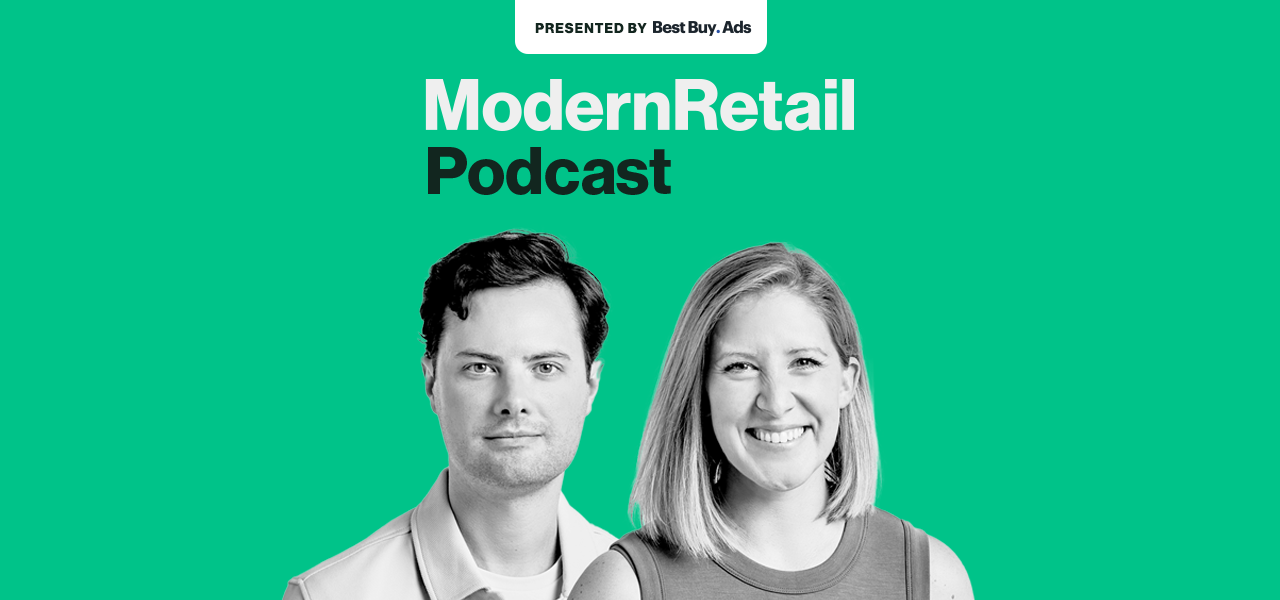Outlines co-founders on trying to make shower liners work as a subscription

Subscribe: Apple Podcasts • Spotify
Outlines is trying to be the Quip toothbrushes for bathroom and home cleaning products.
The company launched earlier this year with a shower liner subscription service. The idea is that customers can buy the shower liner along with other accessories. Then, every few months they can pack up their used musty one, send it to Outlines who will recycle the material and then send another brand new clean liner. But Outlines isn’t stopping at shower liners — the startup is launching both a replenishable body scrubber and a toilet brush soon.
“I knew that if I was to replace [a product like a shower liner], it was simply going to landfill,” said Luke Young, one of Outline’s co-founders. “So I would live with it for far too long — and you wouldn’t live with dirty sheets or any other product like this in your home.”
Young and his fellow co-founder Megan Murphy joined the Modern Retail Podcast this week and spoke about the genesis of Outlines and how the direct-to-consumer business is trying to grow and get its products into new homes.
Both Young and Murphy were working in DTC before Outlines. Young was working in adtech for a U.K.-based DTC company that sells education products, and Murphy was also working at a British CPG startup that made glue products. They met at a coworking space and got to talking about the state of shower liners, and decided to launch their own company.
Thus, Outlines was born. The company launched its first product at the beginning of 2022. The big question was whether or not a humdrum product like shower liners would work with a subscription model. As the two founders put it, it’s all about education. The website focuses specifically on detailing how much waste is made because of thrown-out used plastic. And the hope is that people will align with the sustainability ethos around the company.
Ad position: web_incontent_pos1
The strategy to get eyeballs was to be available on the company’s website first and try to find new customers who were searching online for new products like a shower liner.
“I think we made a lot of mistakes in the first couple of months of what we were bidding on [and] where we were specifically marketing, but it was really just a process of testing and learning,” said Young.
Now that the two founders feel confident in the branding and messaging, their expanding the product base as well as looking toward new sales channels. And those announcements may be on the horizon.
“We love retail, we’re very excited about it,” said Murphy. “we’ve spoken with some buyers to get some early feedback — they’re definitely ready for a refresh and a new brand to come in.”
Here are a few highlights from the conversation, which have been lightly edited for clarity.
Ad position: web_incontent_pos2
How Outlines is trying to find its customers
“One thing that was really exciting to both Meg and I is we both had come from previous businesses that were kind of category creators. And when you’re introducing a new product or creating a new category, that is a big lift. Like, you have to educate people on what this is, why they need it, there’s no organic search volume. It is really hard. So we were actually really excited when we were launching these basic, humble home essentials. And we just had to intercept existing user journeys. People were searching for them, and we just had to essentially siphon business from Amazon, Target, Bed Bath and Beyond. We just had to get that customer and tell a more compelling story, show why our value proposition is better.”
The retail strategy
“Retail is a huge part of our strategy. We both have backgrounds in launching brands into retail. Luke, definitely more than me — he actually led their entire launch into retail at his last company. But we love retail, we’re very excited about it. And we’re especially excited about these products in retail, because I think these aisles and these categories in retail can feel quite stagnant. And we’ve spoken with some buyers to get some early feedback — they’re definitely ready for a refresh and a new brand to come in. So similar to if you’ve ever seen how Quip sells the toothbrush in retail; you buy the initial set or the initial system, but then you can easily register directly with the company to get your replacements at the cadence you choose. So I think that’s one way that we see retail can still work really well for this type of model.”
On subscription fatigue
“You have to take a step back and realize: why did subscription and DTC pair so nicely together? And really, we saw DTC penetrate into every product vertical possible. With rising CACs, subscription is just a natural step in terms of paying off what it costs to win a customer. So I think what users began to see is subscriptions in product categories that just made very little sense. And what that really felt like was a push from these brands to essentially encourage these people to over-consume and to buy more than what they actually needed.”

